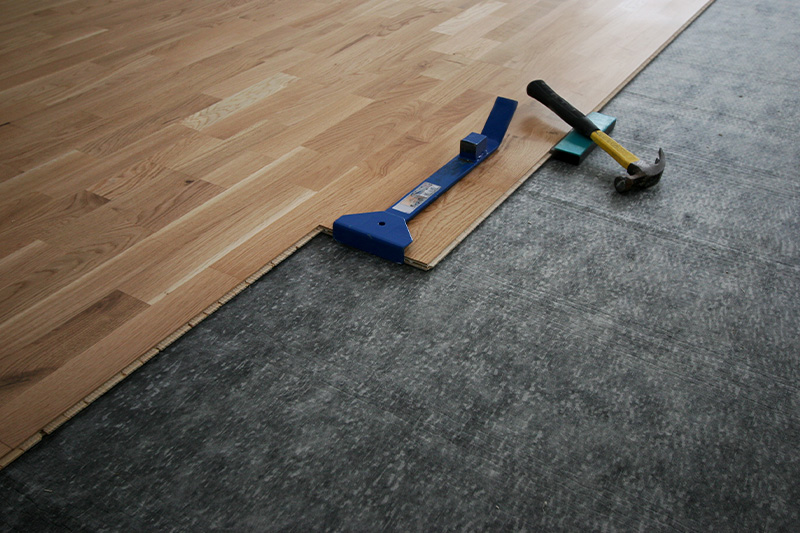Understanding floor fire rating within Australian standards

CRF / CHF Rating according to NCC and BCA C1.10:
How is the CRF test conducted?
- The test specimen reproduces the total flooring system, including the flooring product, underlay, glues and substrate as appropriate, laid horizontally.
- The sample is heated along its length (~1m) using an inclined radiant panel. The sample receives about 11kW/m2 of heat energy from the panel at one end and about 1kW/m2 at the other end.
- It is ignited at the hot end.
- The sample is allowed to burn until the flame goes out (extinction).
- The heat energy measured at the point of extinction is the Critical Heat Flux (CHF), also called the Critical Radiant Flux (CRF) in the Building Code of Australia. The Critical Radiant/Heat Flux is basically the lowest energy a fire requires to keep burning; hence the higher the value, the better.
- Smoke is measured over the duration of the test. The total amount of light extinction (measured as a percentage) due to the smoke obscuring a light beam in the flue is multiplied by the time of the test to give the result (in percent minutes).
What CRF rating do I need?
This depends on the area the flooring is going into. As a rule, we tend to need a 2.2 and above for our flooring applications. If sprinklers are in a building, this can come down to 1.2 and above. Please refer to the Carpet Institute document on DFO for exact details for different areas.
What is the difference between Critical Heat Flux and Critical Radiant Flux?
In relation to this test method and the Building Code of Australia – nothing. The two terms have the same meaning.
What flooring needs a fire rating, and what does not
All types of flooring that go on the floor need to meet the relevant fire regulations, carpet, all types of tiles, laminate, wood (solid and engineered), vinyl, rubber floors in gyms, etc.
Can I just test just the underlay alone?
No. The standard ASO 9239 requires that all Flooring components need to be assembled and tested. A test on an individual component of the flooring is not relevant.
Where does and does not need a fire rating for flooring?
- These do not require a fire rating: Detached and semi-detached houses, Townhouses, and Buildings where no one owns or lives above somebody else.
- These do require to have fire-rated flooring: Units, apartments, blocks of flats, age care centers and retirement living hotels, pubs and clubs and any other businesses where the public attend, including churches and sports halls
Does an individual unit owner in a high-rise need to have a fire rating when changing their flooring?
Under the NCC and BCA No, they do not. But local strata laws may be set down by the building Body Corp stating they do.
I have a report from overseas. Is that accepted here?
NO, To be acceptable for compliance with the Deemed-to-Satisfy requirements of the BCA, the test must be measured to Critical Heat Flux to AS ISO 9239-1 (or equivalent, e.g. ISO 9239-1).
Can these certificates be used for boats and shipping?
No, this is only for Australia and on-land applications only. For boats and ships fire ratings for flooring, they need an ISO international test certificate . Please see Flamecheck underlay.
The customer wants to put flooring on a wall. Can I use the CRF certificate?
No, there is different testing for walls, and the CRF testing we do does not cover walls.
Other Advice
Recommended Products
No matter what level of comfort and performance you need, Dunlop Springtred has it covered. There are 2 premium products available in the range, each offering a different level of comfort and support to suit your budget ...
Dunlop Carpetmate offers an extensive range of foam carpet underlays to help make your carpet even more comfortable. With eight different combinations of density and thickness available, you can choose the right ...